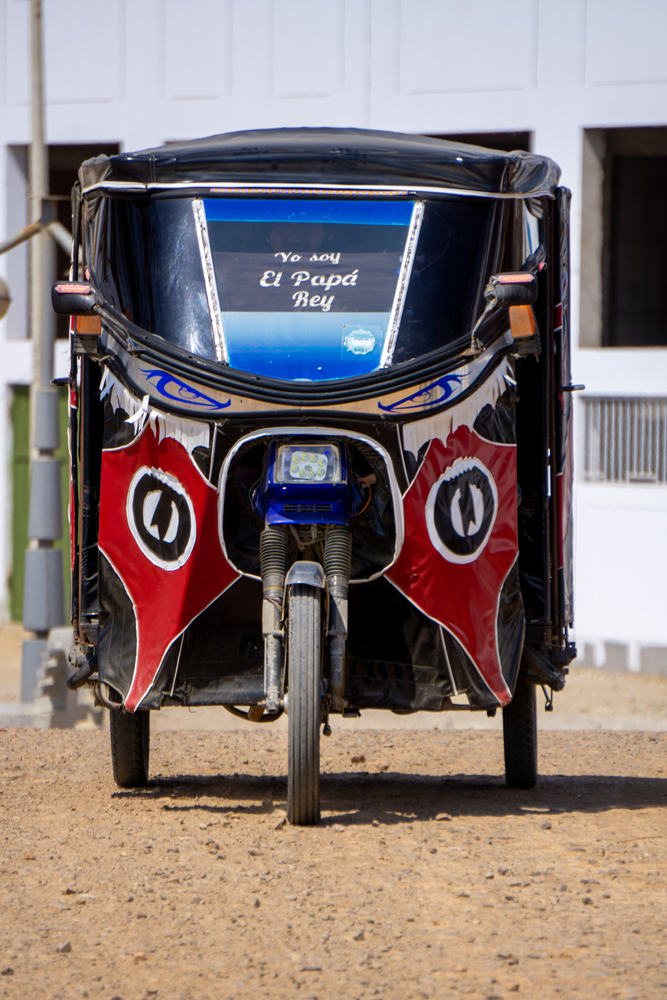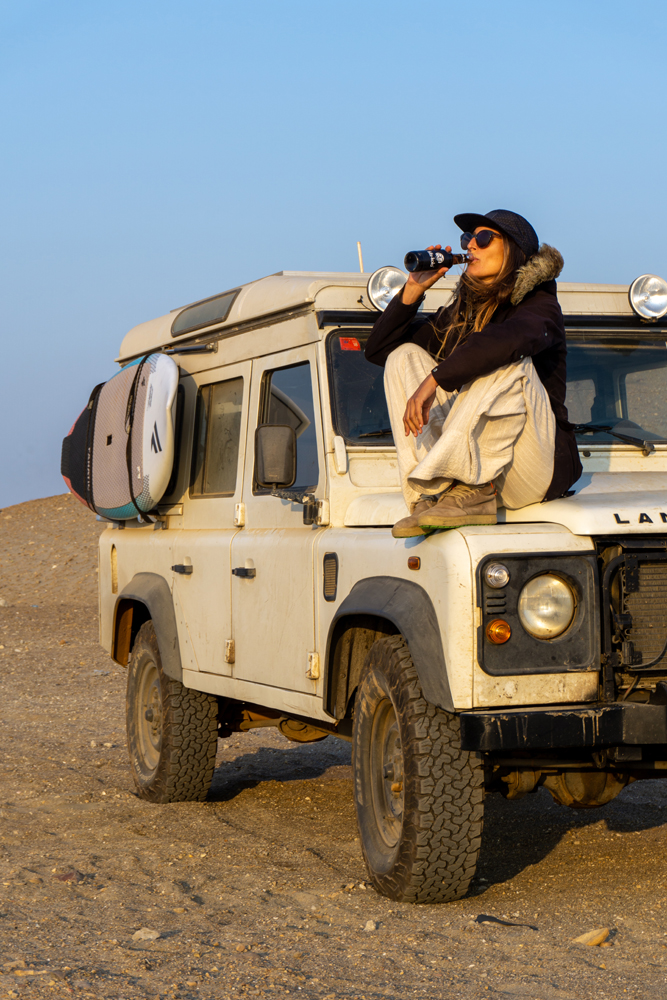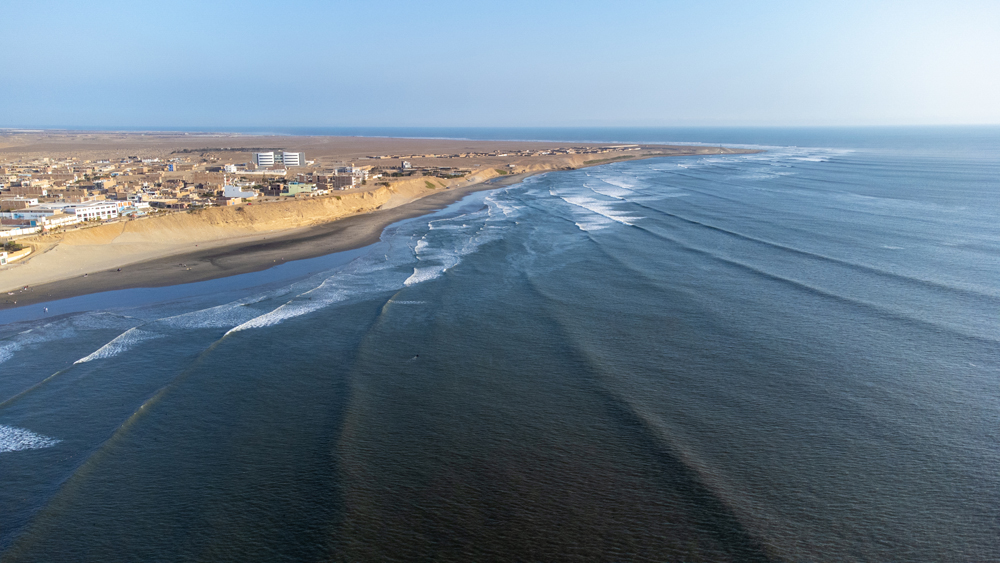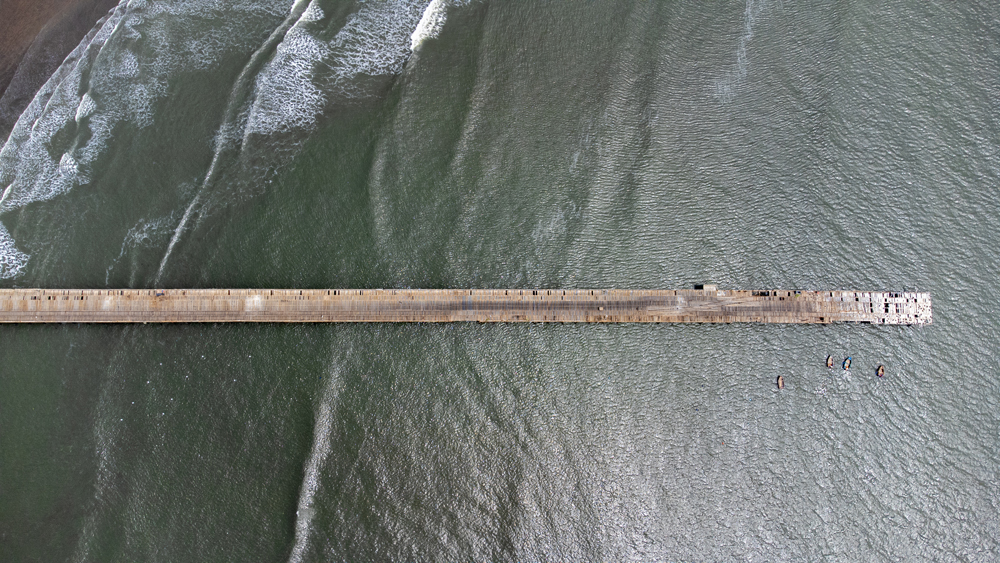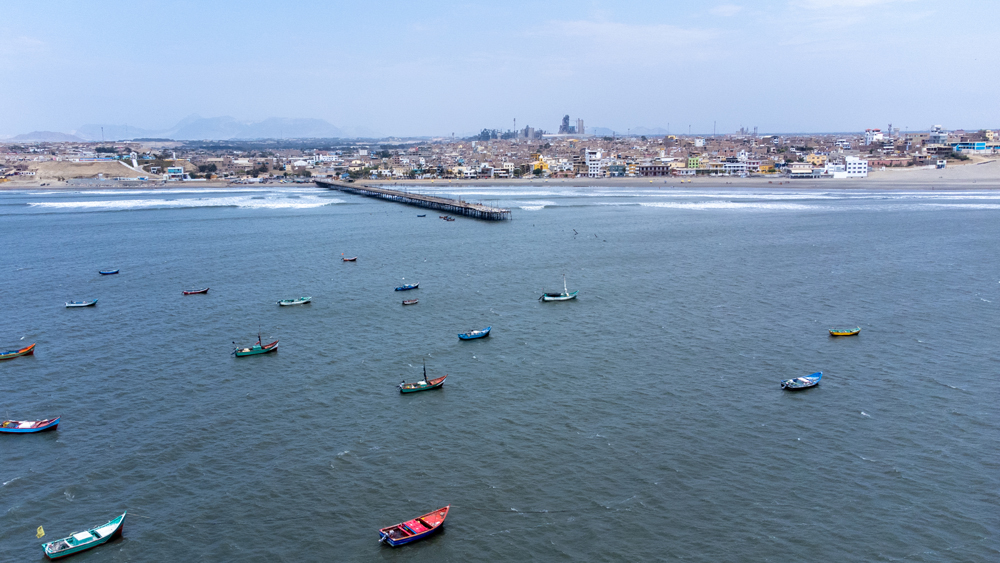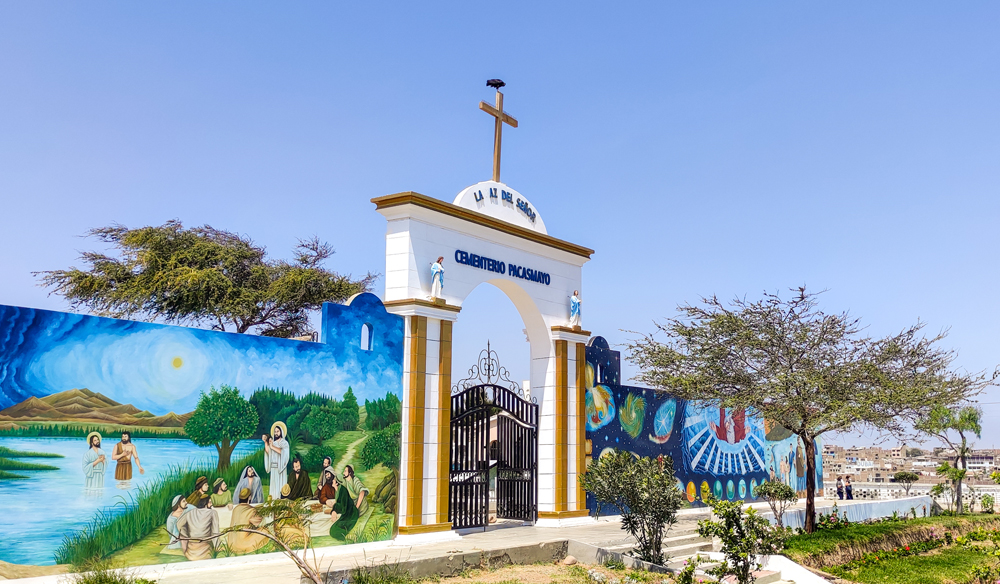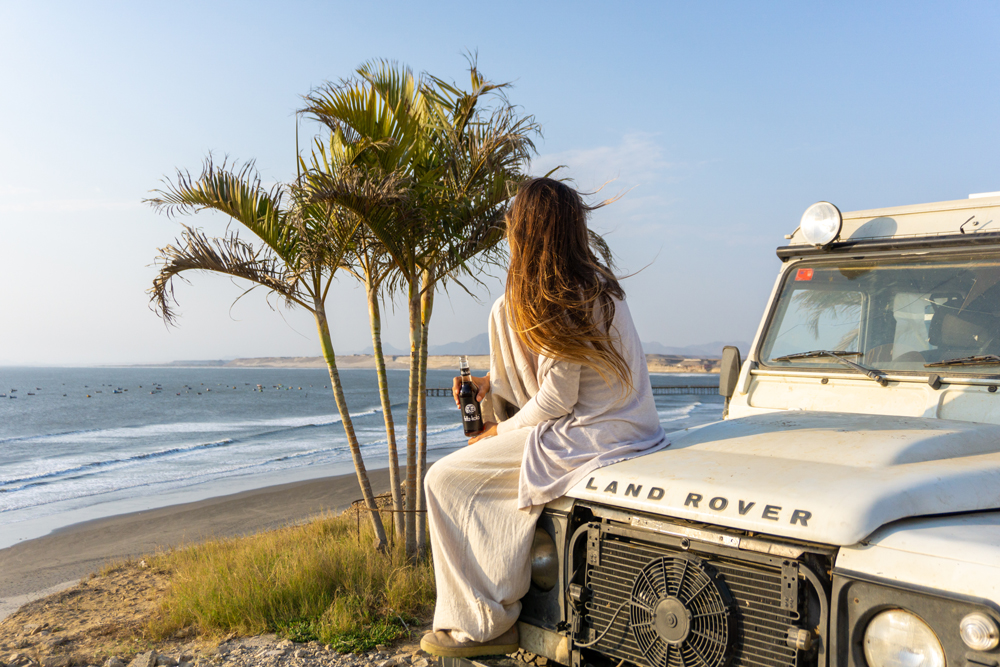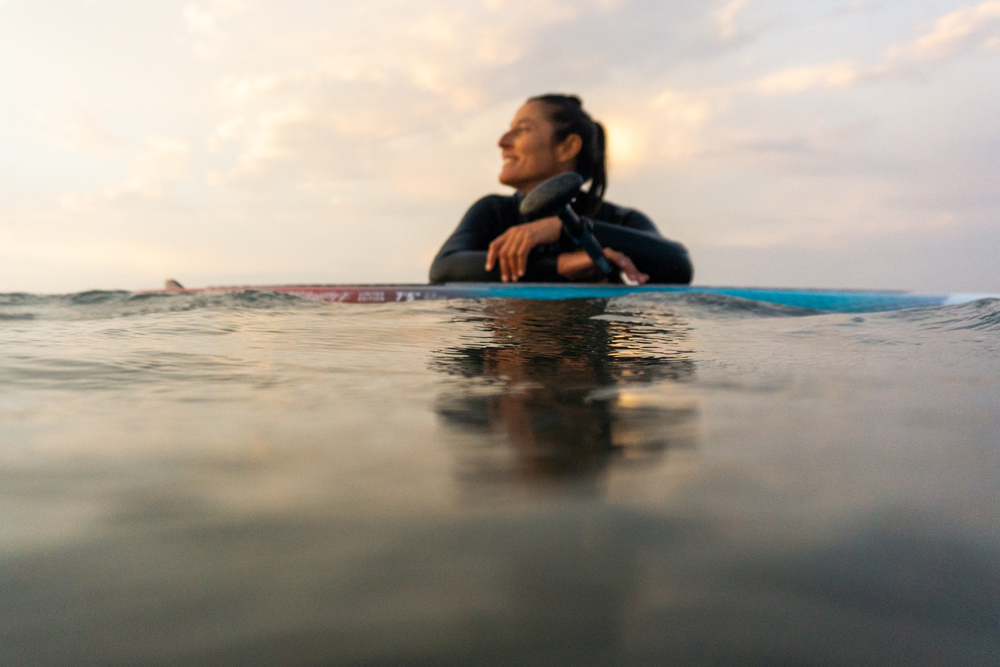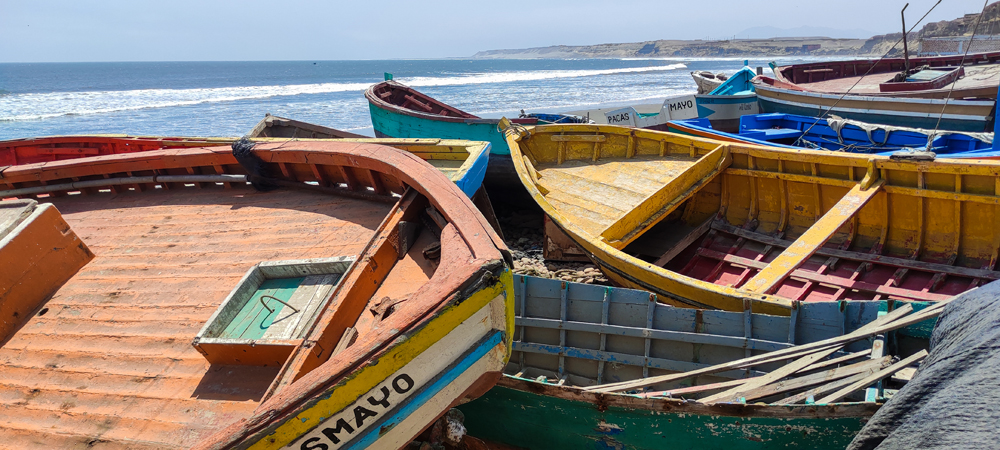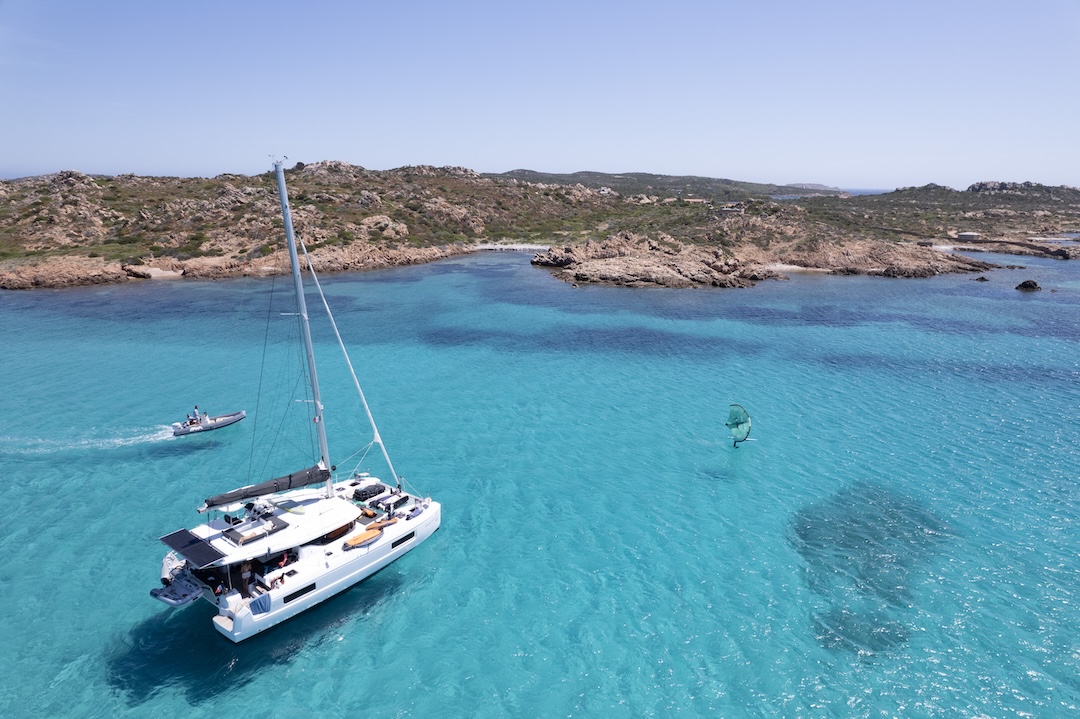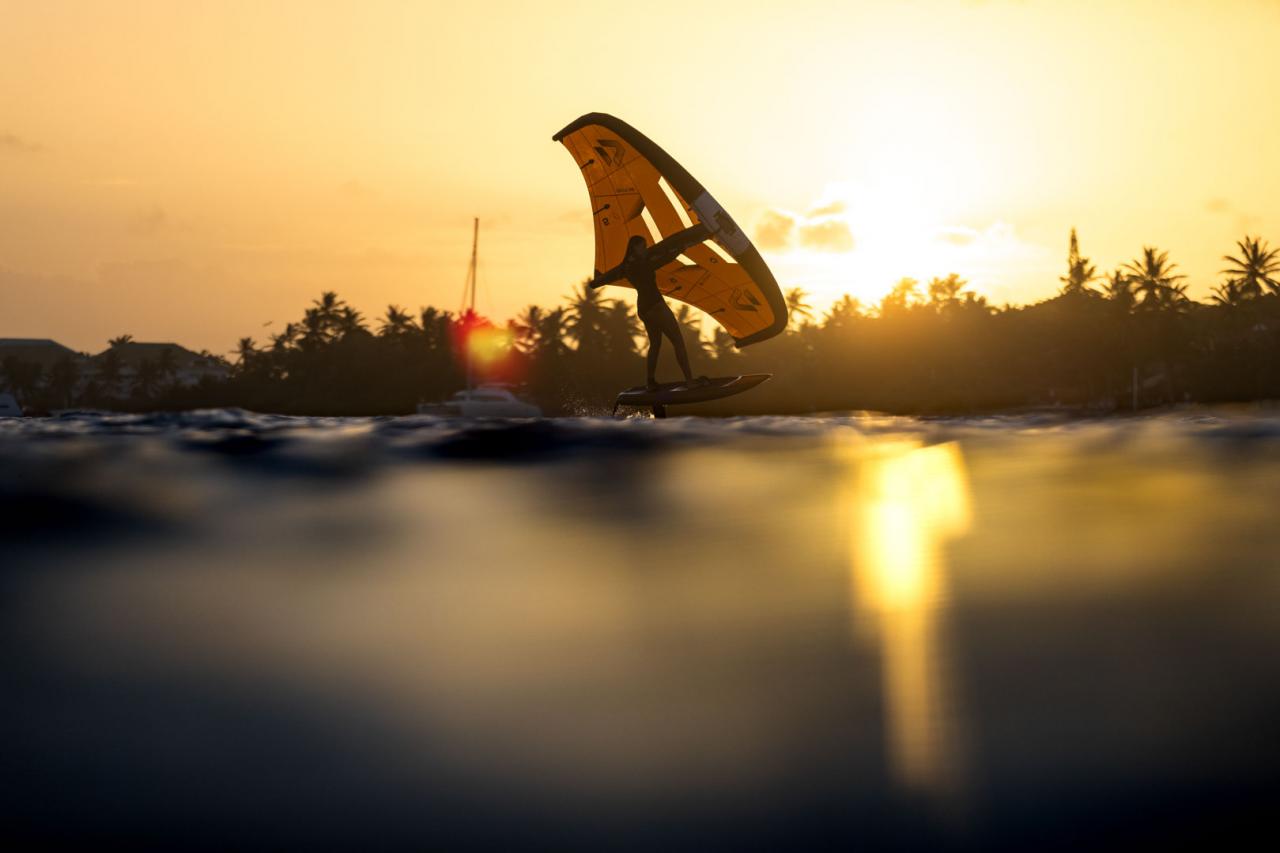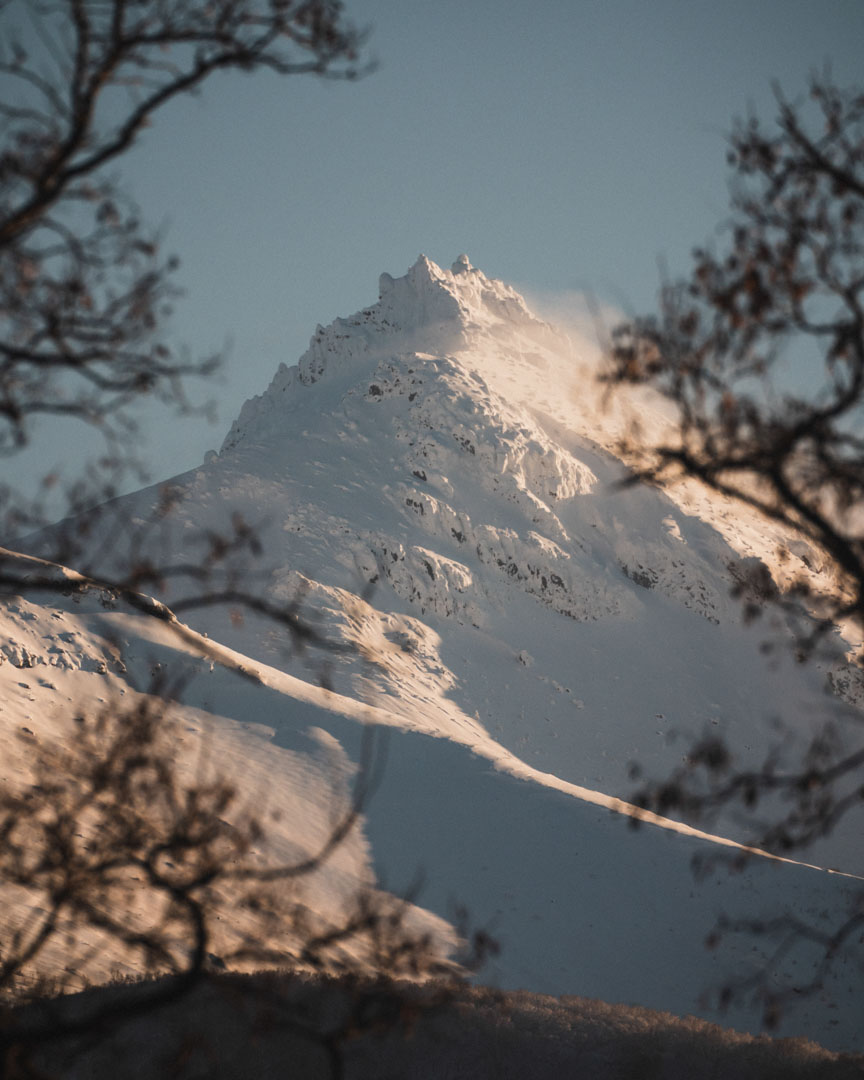Peru, located on South America’s west coast between Ecuador and Chile and facing the South East Pacific Ocean, boasts more than 3,000 kilometers of coastline, receiving swell after swell and transforming them into some of the longest waves in the world.
Peru's nature is rich and varied,and includes jungle (Amazon), highlands (Andes) and a spectacular, endless coastline. Its culture and legacy are fascinating, with Machu Picchu, Cusco, and dozens of archaeological sites to visit and soak in, as well as its gastronomy which is recognized worldwide. But Peru is not only an island rich in culture, it is also the birthplace of surfing - more specifically the birthplace of a form of SUP. Local fishermen used to paddle standing up on their “Caballitos de Totora” (reed horses) in the waters of Huanchaco, a beautiful surf spot in Trujillo. There are pictures on excavated 3000 year-old pottery of these Mochica fishermen surfing the waves. So that says it all, Peruvian waves are made for SUPing!
In addition to all the above-mentioned charms for us ocean and wave addicts, Peru is nowadays one of the few places that still offers the possibility to surf quality waves with just a few other surfers near you in the water. If you are into tranquility, good food, and getting your fill of riding waves until sunset with only pelicans as companions, you will find nothing but happiness on the beaches of Peru.
The Peruvian winter is mild, especially in the north, and although the water is cool (full suit), the climate out of the water is pleasant, with slightly cooler nights. The beaches are essentially devoid of local tourists as it is the Peruvian low season, and international tourists from the northern hemisphere tend to prefer tropical climates. Also, those who go to Peru are more focused on visiting archaeological sites than on surfing. There aren’t many surfers from neighboring countries either, as they are blessed by the same south swells that hit Peru’s coastline, and the local surf scene is not yet so developed as to have crowded peaks in most places. The result is many hours of enjoying endless wave after endless wave.
PACASMAYO AND OTHER SPOTS IN NORTHERN PERU:
The entire coast of Peru is exposed to the Pacific’s south swells, with plenty of amazing and uncrowded surf spots to be enjoyed, even in the capital Lima. But the further north you go, even though the water will still be cold due to the Humboldt current, the weather is nicer and less foggy. I have explored spots in the north during the south swell season (running from April to October). Among my favorite locales were Chicama, Pacasmayo and Lobitos, but of course there are plenty of other perfect left-hand points to discover. I would recommend setting up a base at one of these beaches, and be open to making excursions or strike missions to try out other spots when a larger swell is in the forecast. Lobitos is a bit more crowded, so I would choose Chicama or Pacasmayo as a base.
Pacasmayo: The Perfect Base to Explore Peru
Pacasmayo is my favorite spot to be based in as it really is a swell magnet, picking up even the smallest of swells. I’m not exaggerating when I say it is never less than about head-high, and yet it still holds up to the biggest of swells and never gets very crowded. As an added bonus, because I am also a windsurfing and wing-foiling addict, the side-off afternoon breeze is magic for wind sports.
Pacasmayo is a city that is much bigger than both Chicama and Lobitos. The city is centered around a majestic pier, which used to lead directly to one of the most active commercial railroads in the north of the country. The city is now going through something of a renaissance, especially after the pandemic that hit this country particularly hard. With businesses slowly reopening and new shops and restaurants popping up, Pacasmayo is returning as a charming and flourishing city. Along the beautiful boardwalk, the pier - originally about 700 meters long but now somewhat shorter due to the strong waves that have battered it down over the years - is highlighted by its iconic lighthouse.
In Pacasmayo, although a relatively humble city, as a traveler you will find everything you need. You can choose from all levels of accommodation, either directly in front of your chosen surf spot or a little farther into town. There are plenty of restaurants, rentals, repairs, a large supermarket, two large food markets with delicious fruits, and an abundance of fresh fish. There is no need for a car, because everything is within walking distance, or you can easily catch a mototaxi (tuk-tuk) to get you into town and back.
Pacasmayo: Big Brother to Chicama
While Pacasmayo is already quite well known in the windsurfing world, it still isn’t as famous in the surfing scene as its little brother, Chicama. Even so, it is known among the Peruvian surfers, who show up here on bigger swells for tow in surfing, sometimes even making the 10 hour trip from Lima to catch a big south swell.
Like many other spots around this coast, Pacasmayo offers excellent surfing and stand up paddle surfing usually in the morning hours. The wind picks up around midday if you like to kitesurf, windsurf, or wingfoil. In general, it doesn’t need much swell for the waves to be breaking. Sitting on such a large point with a lot of moving water, the current can get quite strong, especially with a large south swell.
On smaller days, with a paddleboard you can stay at the peak more easily than surfers who are paddling, but on larger days I recommend hiring a surf boat that will pick you up after every ride and drop you back at the point, ready for your next wave. Unlike Chicama and Lobitos, where you can come into shore and walk back to the point, in Pacasmayo you are farther away from shore so walking is not a very practical option. You could go on mototaxi back to the point at the lighthouse for just a couple of USD, but the boat is for sure the best of the options. Expect to pay about $20 USD per person for a 3-hour session.
Unlike Chicama, where a great wave is accessible with any type of board, having a SUP in Pacasmayo is especially helpful because of the stronger currents and the fact that the waves break farther out from shore. While surfing a SUP, you will only need a surf boat assist on the biggest of days, unlike regular surfers who have a hard time getting back to the peak even during medium-sized swells. The one downside of paddle surfing here is that being a more exposed break than Chicama, Pacasmayo does get a little choppy when the wind picks up at mid-day, as it doesn’t have Chicama’s cliffs protecting it from the afternoon breeze.
On small swells, Pacasmayo is perfect for stand up paddle surfing, longboarding, or prone or tow-in surf foiling. As the waves get bigger, it really turns into an amusement park for all types of surf craft, whether paddleboarding, shortboarding, or surfing twin-fins and fish boards.
One of the benefits of being based in Pacasmayo is that you can SUP every day right on the break without having to drive there! But if you want to surf other spots, it is centrally located and well connected. Chicama’s famous left-hander is only about 45 minutes away, perfect for an escape to a smaller, yet more “high-performance” wave when the swell gets very big in Pacasmayo. You can also easily get to other waves such as Puemape (25 minutes away) and Huanchaco (close to Trujillo, about a 1.5 - 2 hr) drive. There are also long-distance buses leaving directly from Pacasmayo’s central bus station to take you further north, where you can then get to other popular breaks such as Lobitos, los Organos, and Negritos. These are all well known surf spots with plenty of information available on Surfline and Magicseaweed, and you won’t have any trouble finding transfers to get you there. If you’re up for even more exploration, leave your wetsuit behind and hop onto a bus up to Ecuador and start exploring South America’s endless coastline.
Chicama: Peru’s High Performance Left
Located about 45 minutes south of Pacasmayo, Chicama is probably Peru's most renowned wave, often considered one of the longest and most perfect left-hand breaks in the world. It is a long, curling wave straight out of a dream, and unlike what you would expect because of its fame, it is not completely overrun by surfers, especially when it is not being hit by a large swell.
Since it’s such a long wave at Chicama, whatever crowd there is quickly spreads out along its 2 kilometers of peaks, which connect together to form a long glideable wave. Chicama is not a heavy wave, and the vibe is relaxed and welcoming. On smaller days, you will cross paths with maybe a dozen surfers. Chicama’s great for any type of board, such as longboards or paddleboards. It’s only when a big south swell shows up in the forecast that the town fills up; but even so, it doesn’t get very crowded.
There are a few rocky outcroppings at Chicama that are the takeoff points to start your ride, with the wave curving in and breaking over a sandy bottom, sometimes sectioning off on smaller swells and connecting together to form the longest wave of your life when the swell is bigger. The winds pick up in the late morning, but Chicama’s wave holds its shape even in a stronger wind. It tends to blow off-shore here and is relatively protected by the high cliffs above the beach. Even so, the strong offshores can get a little bit annoying for stand up paddle surfing as you may get blown back while trying to paddle into a wave, making them difficult to catch. I would definitely recommend that you not skip the light-wind morning sessions.
As one would expect from such a large point exposed to the open south Pacific swells, the current is quite strong at Chicama pulling you north along the coast. With a SUP you can try to defend your position and stay up on the peak to catch your wave, but most people tend to drift down with the current, catching waves along the way when a set rolls through, then either walking back up the beach or catching a ride in a surf boat back up to the point. You can hire a private surf boat to take you back up to the peak (about $100 for a group of 4 people), or join into a shared surf boat paying about $20 per person. Walking back up the coast with the long curved coastline gets tiring after a while; you will triple or quadruple your wave count by using a boat service as opposed to walking.
Chicama itself is a smaller fishing village that has found its fame as a surf destination. The charming boardwalk definitely has a little bit more of a surfer-ish vibe, with small convenience stores and restaurants dotted along the way. There are a few boutique and higher-end hotels catering to the traveling surfers directly in front of the point. Meanwhile there are also plenty of budget-friendly surf hostels and flats to rent for all pocketbooks. Chicama and Pacasmayo are about 45 minutes apart, and a taxi ride or transfer between the two costs about $50 USD.
Peru’s Legendary Lobitos:
Lobitos is located about seven hours north of Pacasmayo, just a couple of hours shy of Peru’s northern border with Ecuador. Isolated among a desert landscape dotted by oil pumps and gas lines, Lobitos offers one of the most fun waves that I have ever surfed.
Located further north than Chicama and Pacasmayo, the climate here is a bit dryer, warmer, and sunnier than further south, yet the water is still chilly due to the Humboldt current heading up along the coastline.
The waves in Lobitos, even when small, are quite fast, hollow, and fun. Swells break just meters away from the beach, along a vertical wall that holds up well giving a comfortable margin for takeoffs and timing. Breaking so close to shore, it is a luxury at Lobitos to finish your wave by stepping off onto dry sand and walking back up to the point, skipping a tiring paddle against the current.
From my experience of spending a week in Lobitos, the takeoff is choppy at the peak for SUP surfing, especially with the strong wind that picks up during the day (much stronger than both Pacasmayo and Chicama), but it is definitely glassy and clean both during the morning and evening sessions. This wave can be enjoyed with any type of board and level, from beginner to expert. It is easy and fun while - at the same time - fast and hollow, a combination that you do not find very often. You will find expert surfers enjoying waves while a few meters down the line there are beginners being pushed into them by local surf instructors.
The downside at Lobitos is that it is definitely more crowded, and can get very busy on a good swell. The vibe in the peak can change dramatically depending on who is in the water. It is generally quite welcoming, but with so many people in the water, you are bound to meet one poor surfer’s attitude at one point or another during the day. Lobitos definitely needs a larger swell than Pacasmayo in order to work well, so it is best to go on a forecast, but expect crowds.
Lobitos is a curious mix between a fishing village and surf town, with petroleum exploitation thrown in for good measure. While the village has a water scarcity problem, it is rich in petroleum underground. In town, you will be surrounded by oil rigs, oil pumps, and gas lines during your stay. It had a population of up to 6,000 people in the 1900s, working for an English oil and gas company. It is said that Queen Isabel would come to spend her vacations here, in a large house set on the cliff overlooking the beach, which has since been converted into a surf hostel. In the water, you will be surfing next to oil platforms, some of which have been abandoned and have turned into artificial reefs that now host hundreds of marine species in their own man-made ecosystems. On shore, between the surf hostels and old English pine constructions, the arms of the oil pumps keep chugging away, rhythmically pumping up the liquid black gold hidden away below the desert landscape. Even with all of this oil and gas exploitation, the beach of Lobitos is beautiful with a charming atmosphere and plenty of surfers, both national and international, enjoying perfect waves. At the pier, both pelicans and surfers circle around waiting for the daily catch to return to shore.
Having a developed surf scene, Lobitos offers accommodations for all types of travelers, from extreme budget backpackers to luxury surf accommodations for those happy to splurge. Although you may find a few restaurants with a live band a couple of days a week, don’t expect much entertainment except for the glorious waves. You are here to surf, and you’ll be spending more hours than you can imagine in the water. Personally, I would not set up my base camp in Lobitos, but would definitely have it on my list of must-visit destinations for a strike mission on a good forecast. I would love to explore more spots like this in the area that I didn’t get a chance to visit this time.
WHEN TO GO: Traveling to Peru
Peru’s coast is exposed to both south and north swells, meaning there are two surf seasons so you can surf almost year-round. The south swell season tends to be more reliable, and is the direction you need to wrap around the points that create the endless lefts of Pacasmayo and Chicama. This occurs during the Peruvian winter months, between April to October, when the southern swells come up from the south Pacific. The waves are larger, more consistent, and even though the water is slightly colder, the weather is more stable and less stormy. This is the season when I have always gone, and I’ve never been disappointed!
The northern swells come from the same systems that hit Hawaii’s north shore during the winter months between October to April, which are also Peru’s summer months. The water is warmer, but swells don’t arrive as consistently and it may be a bit rainy. Even so, when the north swells do arrive, the same surf spots work with a wrapping southern swell break with a more vertical wall, and the waves are much faster. There are also many surf spots around the Lobitos area that only work on north swells, so you’ll get a chance to surf some epic waves that many visitors do not experience at other times. When visiting from October to April you’ll also want to have a Plan B and be open to some cultural experiences in between swells.
WHY PACASMAYO? WHO IS IT FOR?
Northern Peru is the perfect destination for the SUP surfer looking to progress by spending endless hours in the water, getting more comfortable in bigger waves and wanting to catch the longest waves of their lives.
If putting on a wetsuit doesn’t bother you, and you simply want to disconnect and spend hours upon hours in the water surfing empty waves, this is your place. For those looking to improve their frontside or backside turns on left-hand waves, you will get so many turns to practice on a single wave that you will lose count. Expect more turns on a single wave in Peru than in a full day of surfing at many other spots around the world!
On the big days, although the waves may seem large, there are no nasty rocks, reefs, sharks or shorebreaks, and the water is very deep so you don’t need to worry about hitting the bottom. Pacasmayo is the best place to catch some of the biggest and longest waves, without the dangers of many other surf spots. When the swell gets even larger, entering the XXL size, it’s really quite a sight to see 3-4 times overhead waves peeling off perfectly into infinity and beyond, including fast sections and big barrels. It is quite a spectacular sight to behold, whether from the water or watching from shore.
Pacasmayo is also the perfect place to enjoy other water sports powered by the wind, whether windsurfing, kiting, or wing foiling as the wind picks up gradually throughout the afternoon. It’s ideal for those who want to be focused on spending as much time as possible in the water, as well as for families where everyone is passionate about surf or wind sports.
WHERE TO STAY IN PACASMAYO:
Hotel el Faro is the closest to the break, with a nice view and it is very comfortable as a base if you plan to do other watersports. You can paddle straight from the hotel to the point if the swell is small and there is not a strong current, but you can also go by tuk-tuk to the lighthouse (a $1 taxi ride) so you start directly at the peak and not waste your energy paddling out. Hotels and hostels in town are cheaper where you can socialize with the locals instead of staying in the tourist bubble, but you will need to get up to the lighthouse by mototaxi. Water athletes can also find apartments to rent if planning to stay for a longer term. For extended visits, you will be happy to have a place with a kitchen to add some variety to your meals. The local produce in Pacasmayo is excellent, and you can even hire a local chef to come to your home and teach you to cook some local dishes, and the price is not much more than eating out.
WHAT TO EAT AND DRINK:
I love to try everything. Starting from the street trucks or tiny places where you can have a ceviche and a patata rellena (stuffed potato) for 1 dollar, to the daily lunch menus with many options and delicious fried fish for 3 dollars, to having a drink or a nice meal in places with amazing views such as is the Hotel el Faro or the terrace of the Hotel Pakatnamu, right on top of the Malecon (boardwalk) in town. There are also amazing sunsets over Pacasmayo pier. Of course, try all kinds of fish, ceviches and pescado sudado. To drink, you need to try the Pisco Sour, but be careful, they go down very smoothly! And of course, be sure to try Pacasmayo’s locally brewed craft beer, from Pakat Cerveceria.
WHAT TO BRING:
Make sure to bring your own SUP (no SUP rentals available) and paddle.
Bring 2 paddles if you can, in case you lose or break one, to make sure you have a spare. Paddles are light and easy to pack in your board bag, it is always safer to pack a spare.
Winter wetsuit (in June I used a 4/3, by September I was using a 5/4). You may get away with a slightly thinner one, but I prefer to stay warm and spend more time on the water. You will want those extra millimeters especially for regular surfing.
I suggest packing your bigger board, if you can only bring one. You’ll want the extra liters for paddling into larger waves, or if the current strong or the wind comes up during your session.
Warm clothes and a jacket. It gets chilly once the sun goes down, especially if the wind stays up after sunset, so you’ll want to stay warm when going into town for dinner. If you forget something, you can buy warm clothes in town for very cheap.
If your hotel or apartment doesn’t have a warm blanket, you can buy one in the market for about $20 and sleep well. My best advice here is to make sure you get plenty of sleep to recover from so many hours in the water!
Sunscreen! Even though it’s cold and you are in a full wetsuit, the sun is very strong, even on the cloudier days.
Roof rack straps. You cannot rely on taxis having straps, it is always much simpler to pack your own into your board bag for getting to/from the airport or bus stations
Surf wax for when you need it. It can be difficult to find sometimes, and the prices might cause a bit of a shock!
GETTING TO PACASMAYO:
When arriving internationally to Peru, you generally have two options for getting to Pacasmayo:
Fly into Chiclayo or Trujillo, both of which are about a 2-hour drive from Pacasmayo. Chiclayo is to the north and Trujillo to the south. From there, a private transfer service can pick you up from the airport with your board bags and bring you straight to your hotel or apartment. Try to fly with combined flights, so you don't pay and carry the board bags at every connection.
Fly into Lima, and take a 9-hour bus ride straight to Pacasmayo. Although it sounds like a more complicated option, it is really quite easy and you will arrive in a similar amount of time, and a much cheaper option if the flights are not connected. When arriving in Lima, you can take a taxi or Uber to the bus station (about $10 USD), and you can catch an overnight sleeper bus from Lima to Pacasmayo. They’ll take your board bags on the bus, so there is nothing to worry about. You’ll arrive in Pacasmayo at about 8 a.m., simply grab a taxi at the Pacasmayo bus terminal for the 5 minute drive straight to your hotel, and you’re ready to hit the water. I try to travel by bus with “Excluciva”, which is the higher-end line of buses from “Civa”. They offer the lay-flat beds so you can sleep during the journey (think business class airline seats). Bringing a board bag is generally not a problem. You may be charged a little extra, but it tends to be in the range of about $5-$10USD, not like the prices you would pay at the airport in NYC. You can reserve your bus tickets online through their website, it costs about $35-$40 Lima to Pacasmayo.
PACASMAGIC KEEPS ME COMING BACK
Pacasmayo has always been on my wishlist of spots that I wanted to visit, until I finally went in 2017. I have been coming back ever since (except during the pandemic), and this year I even spent 3 months in this surf paradise. This just goes to show how much I enjoy the conditions and how reliable a spot it is! The waves are generous and always offer something to learn, and the long paddles back up to the point are almost meditative after catching the longest ride of my life.
There is certainly a reason that they call this place “Pacasmagic”! The Mochicas already knew one thing, that Peruvian waves are meant to be ridden!
IN SHORT, WHAT YOU CAN EXPECT from PACASMAYO:
Pacasmayo Pros:
Longest ride of your life!
No crowds
There are many other spots around the area if you wish to explore, but you can also simply stay and enjoy it here every day, with no need to drive anywhere
Cheap
Amazing pelicans and sunsets
No dangers: no rocks, no sharks, no broken boards (cheap repairs if you do happen to get a ding)
Amazing ceviche, good food, great fruit! Plenty of restaurants to choose from in town
Perfect to practice or learn other water sports
Cheap surfboard rentals - there may not be SUPs available to rent, so be sure to bring your own
Many local surf photographers (land) - not cheap, and the quality varies, so be sure to ask to see their photos when choosing who to hire. You’ll want to take home the memories of the wave of your life!
Surf boats available for hire to take you to the peak - it gets expensive for longer trips (about $20 per person for a 3 hour session), but totally worth it on the really good days!
Friendly atmosphere in the water
Escape for a few days to Machu Picchu for a cultural tour in between swells
Pacasmayo Cons:
It gets windy in the later mornings and throughout the afternoon
Strong current when it’s big, impossible without a surf boat on the bigger days
Sadly, Pacasmayo’s streets are very dirty with a lot of garbage; there is a big problem with litter.
Lobitos and Chicama are much cleaner.
SUPing hours (early mornings and late afternoons) can be a bit foggy/cloudy, but it will be glassy.
Brown cold water, full wetsuit needed.
Not much going on in the village
Intermittent water problems - sometimes no running water, or no hot water in the showers
Not the most family-friendly vacation destination
You need to bring your own SUP, no rentals available



